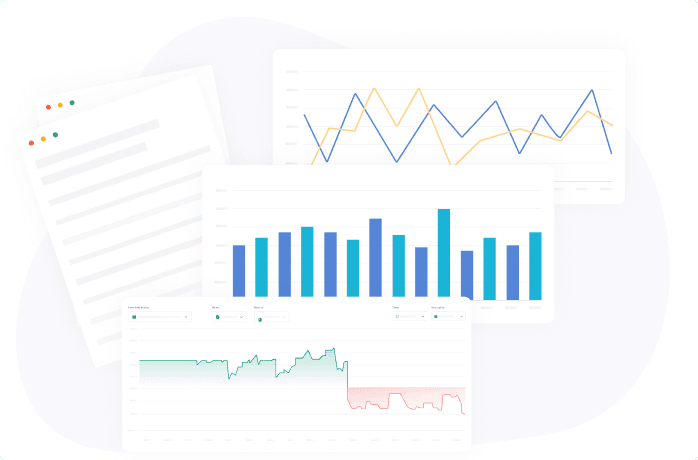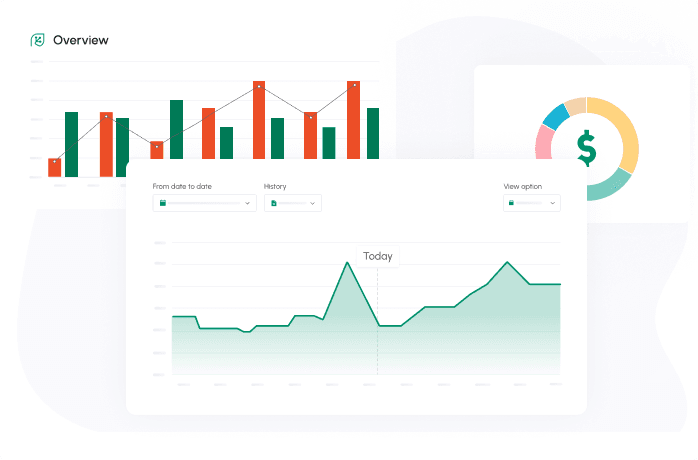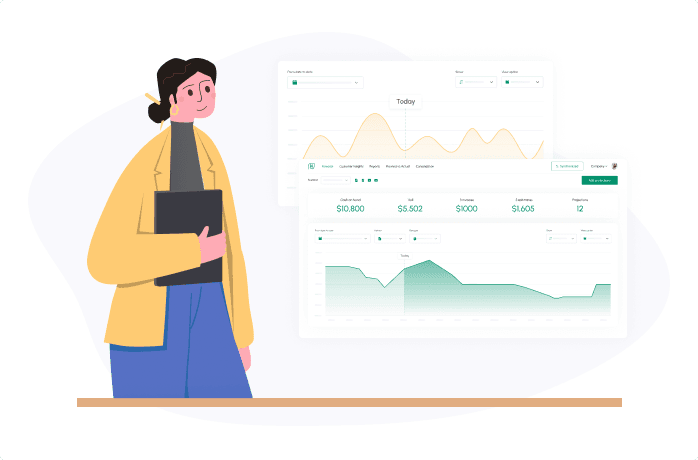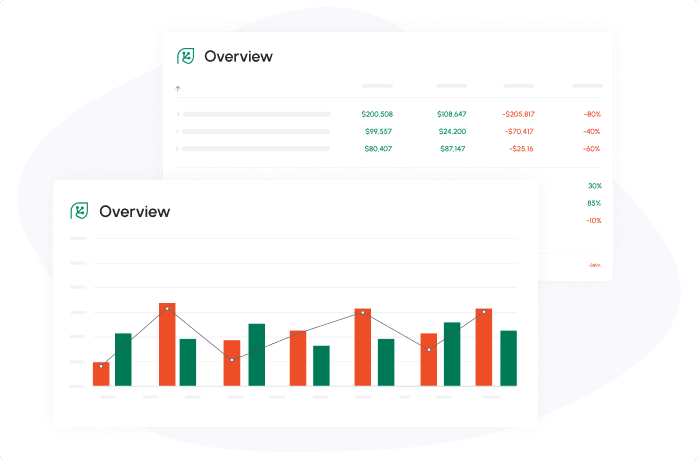

10 cash flow tips to implement today!
No matter how much revenue you have or how healthy your profits are, your business can still get stranded if you have cash flow problems. Improving your cash flow will strengthen your company and give you the freedom to grow and expand your business. That cash comes in handy for increasing staffing, stepping up your marketing, or rewarding your shareholders with a distribution.
Cash flow is so crucial to a healthy business, that we’ve put together a list of the top 10 cash flow tips to help you stay positive. Let’s get started:
1.The quicker you invoice the sooner you’ll collectInvoicing your customers may not feel urgent, but a quick invoice is the best way to be paid ASAP.
There’s a short window right after you deliver the products or services where both you and your customer are thinking about the transaction. This is the best time to get an invoice into their hands. The sooner they receive it, the quicker they’ll be to get it paid.
Some business owners actually feel bad sending out invoices. If that’s you, you’re not alone. But remember, you offer great products and services to your customers and they’re happy to pay for that value. Do them a favor and send the invoice immediately, when they’re still basking in the glow of what you’ve given them.
2. Set the right payment terms for your customers
In the past, long payment terms were the norm. In big corporations where multiple approvals are needed, this may be reasonable, but for most customers, it’s really not necessary.
When your customer receives an invoice, payment is as simple as a few clicks. Giving them a default 30 days to click makes it harder for them to remember and more likely that you’ll end up chasing down the invoice with reminders later on.
Instead, set your default payment terms to “Due on receipt.” You can adjust terms as needed if you’ve agreed on a longer period for a certain customer. If not, stick with due on receipt to speed up the process and make it easier on everyone, your customer included.
Tip: There may be an industry standard on this. If your industry traditionally offers longer terms, you may need to follow suit to please your customers. Or maybe it’s time to challenge tradition, be a trailblazer, and outperform your industry standards for cash flow.
3. Do they have everything they need?
What information does your customer need in order to approve the invoice? Who needs to sign off on that approval? These are questions you need to answer and make note of. That way you can be sure to include the needed details in your invoice and CC the right people, in addition to the AP department.
If you’re sending out a large invoice or have a customer with complex needs, follow up your invoice with a call to make sure they received the invoice and have everything they need in order to process it. This avoids any delays and reminds them that it’s not just an invoice in an email, there’s a real person waiting for that payment.
Just like tips one and two, you may struggle with this at first but you’re actually doing your customer a favor. You’re reducing the confusion and stress of paying the invoice by getting it in their hands at the right time and with all the details included.
4. Own your collections process
If everyone is responsible for collections, no one is responsible for collections. To get the best results from your AR process, put a dedicated person (or people) in charge of following up and collecting on invoices. That way, they know exactly what’s been done they can truly own the collections process.
The process itself should be approved by management to ensure that collections are being handled “by the book” in terms of follow-ups, reminders, and the aging of receivables.
5. Set collections goals
Not only do your collections people need ownership, but they also need goals. Make sure they know what to aim for in terms of on-time payments and AR aging. If you’re struggling with cash flow, collections and AR should be high on your list of KPIs to track and improve.
According to a 2017 Dun & Bradstreet study on US payment practices:
53% of invoices are paid by the due date 39% are up to 30 days late 8% are more than 30 days late
Use these as guidelines and refine them based on your industry and your current numbers. Make sure your collections team is informed and incentivized to improve your numbers and reach their goal.
6. Make payment non-negotiable
When payments aren’t received on time, make contact with the customer immediately. Be polite but assertive and outline the consequences of non-payment. Try to get an expected payment date or schedule a payment for a future date.
Follow up on the expected payment date and follow through with consequences when needed.
Tip: If you’re using “due on receipt” terms, it may not be appropriate to place a follow-up call immediately. Establish a policy for how long your grace period is and when you’ll follow up. That grace period is for internal collections use only and is NOT an excuse for customers to use to delay payments.
7. Managing difficult customers
Some customers are chronically late. They may have their own cash flow issues, may be unorganized, or may simply be pressing their luck and delaying payments as much as possible. When dealing with customers like this, you need to set your boundaries.
If a customer has a history of late payments, you may want to establish credit terms so you are at least collecting that payment with interest. You may even need to require advanced payment from some customers to avoid issues for both you and them. This could lead you to lose a few customers, but it’s definitely better than providing services and never getting paid.
8. Include Payments Due in Your Cash Flow Forecast
Any payments due should be calculated in your cash flow forecast. We take care of this in Cash Flow Frog. Outstanding invoices are added to your forecast as “cash-in” transactions on the expected payment dates. These dates are based on the customer’s historical payment habits, so you have the best estimate of incoming cash flow.
You can further customize your forecast by:
Excluding or including certain invoices Modifying the expected payment date on a certain invoice (if arrangements have been made, for example) Modifying the expected date rules for a certain customer Automatically excluding invoices overdue by a certain number of days
With this flexibility, you’ll have the most accurate picture of your future cash flow.
9. Work with your vendors if cash is tight
Sometimes, cash is tight. With the current COVID crisis, this is even more common. When you’re on the receiving end of invoices, you want as much flexibility as possible on your payments.
If you’ve got a short-term cash flow problem, you may be able to delay payments to certain vendors to fix the gap. By reviewing your cash flow forecast, you’ll be able to foresee these gaps and make arrangements in advance.
In Cash Flow Frog, you can view your outstanding bills by expected payment dates. You can edit or postpone those dates to correct the cash flow shortage. Then reach out to those vendors to ask about postponing payment.

10. Update Cash Flow Weekly
What gets measured gets improved. The best way to work on cash flow is to track it on a regular basis.
Cash Flow Frog tracks your data in real-time, so you can easily update your forecast every week. This will help you create and stick to a plan so you can keep your cash flow positive.
Cash Flow Frog automatically creates forecasts, all you need to do is connect with QuickBooks and our algorithms will analyze your data and provide a projection of your cash-flow balance. The data is imported in real-time, so we capture current QuickBooks data every time you log in. You can view your forecast in a daily, weekly, or monthly view.
Conclusion
Cash flow can mean the difference between surviving and going out of business. But you don’t have to be a victim of poor cash flow. You can take action to get it moving again.
If you’re struggling with cash flow, take proactive steps to speed up your incoming cash and manage your outgoing cash. If you’re unsure where you stand or want a better look at what’s coming up in the future, you can count on Cash Flow Frog’s forecasts to help you plan.
With these 10 tips in your arsenal, you can take your cash flow from troubled to terrific.
Do you have cash flow tips and tricks that have helped you in your business? Please feel free to share in the comments.

FAQ
Related posts:
You may be interested:
New:












